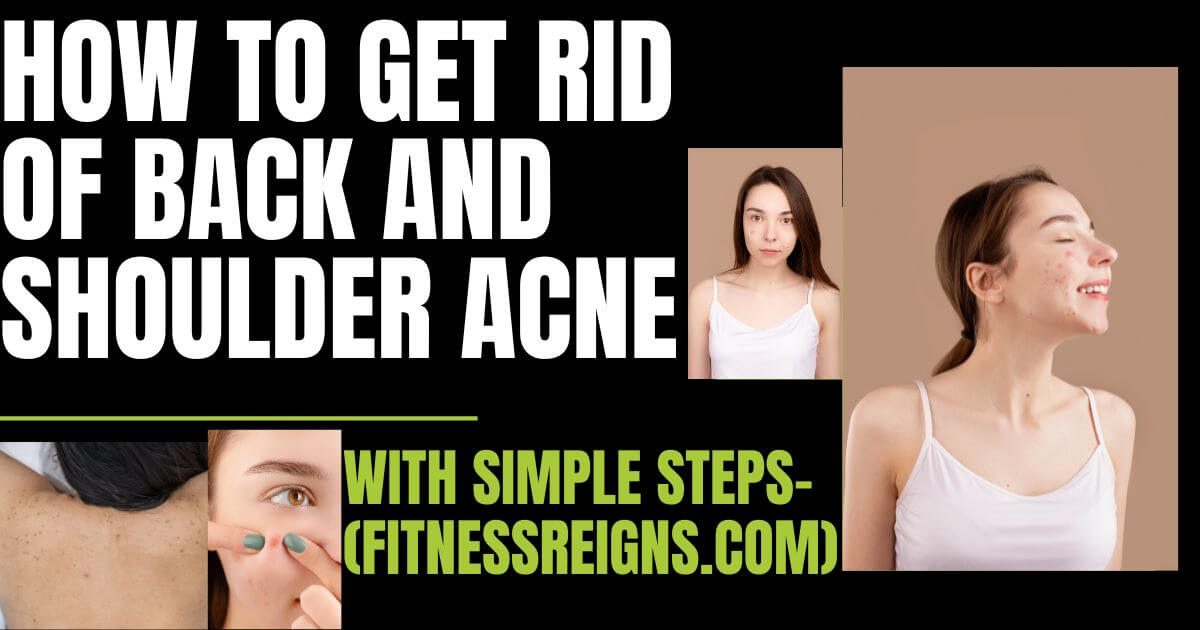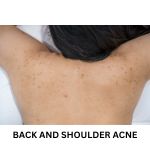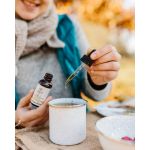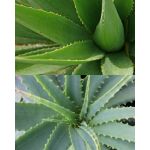Back and shoulder acne is a common dermatological condition that affects millions of people worldwide. Also known as bacne, it can cause discomfort and embarrassment, especially during the summer months when wearing revealing clothing is popular. While acne on the face is often discussed, acne on the back and shoulders can be just as troublesome. In this article, we will explore the definition of back and shoulder acne, its prevalence and causes, and the importance of addressing it. We will also provide tips on how to prevent and treat back and shoulder acne.
A. Definition of Back and Shoulder Acne
Back and shoulder acne is a skin condition that occurs when hair follicles become clogged with oil, dirt, and dead skin cells. The clogged pores can lead to the development of pimples, blackheads, whiteheads, and other types of acne. Acne on the back and shoulders can range from mild to severe and can cause discomfort and pain.
B. Prevalence and Causes of Back and Shoulder Acne
Back and shoulder acne affects people of all ages, genders, and skin types. According to a study published in the Journal of the American Academy of Dermatology, acne on the back affects over 50% of people with facial acne. The causes of back and shoulder acne are similar to those of facial acne, including genetics, hormonal imbalances, and certain medications. Other factors that can contribute to back and shoulder acne include:
- Sweating
- Tight-fitting clothing
- Friction from backpacks or sports equipment
- Poor hygiene
- Exposure to environmental pollutants
C. Importance of Addressing Back and Shoulder Acne
Back and shoulder acne can cause physical discomfort, emotional distress, and reduced quality of life. It can lead to scarring and hyperpigmentation, which can be difficult to treat. Additionally, severe back and shoulder acne can indicate an underlying medical condition, such as polycystic ovary syndrome (PCOS), which requires medical attention. It is essential to address back and shoulder acne to prevent these negative outcomes.
D. Overview of the Article
In this article, we will discuss various aspects of back and shoulder acne, including its definition, prevalence and causes, and the importance of addressing it. We will also provide tips on how to prevent and treat back and shoulder acne. By the end of this article, readers will have a better understanding of back and shoulder acne and how to manage it effectively.
Symptoms of Back and Shoulder Acne
Back and shoulder acne can present differently from facial acne. It is essential to recognize the symptoms of back and shoulder acne to distinguish it from other skin conditions. Some common symptoms of back and shoulder acne include:
- Pimples, blackheads, whiteheads, and cysts on the back and shoulders
- Redness and inflammation
- Pain and tenderness
- Itching and irritation
- Scarring and hyperpigmentation
Prevention of Back and Shoulder Acne
Preventing back and shoulder acne is the best approach to manage it. Here are some tips to prevent back and shoulder acne:
- Wear loose-fitting clothing made of breathable fabrics
- Avoid wearing tight backpacks or sports equipment
- Take a shower after exercising or sweating excessively
- Use a gentle, non-comedogenic body wash
- Avoid using harsh scrubs or exfoliants
- Use a clean towel to dry the back and shoulders
Treatment of Back and Shoulder Acne
There are several treatments available to manage back and shoulder acne, ranging from over-the-counter products to prescription medications. Here are some common treatments for back and shoulder acne:
- Benzoyl peroxide: An over-the-counter topical medication that kills acne-causing bacteria and reduces inflammation.
- Salicylic Acid: This medication works by exfoliating the skin and unclogging pores. It is available over-the-counter and in prescription strength.
- Retinoids: These medications work by promoting cell turnover and preventing clogged pores. They are available in prescription strength only.
Other Treatments
In addition to topical and oral medications, there are other treatments that may be effective in treating back and shoulder acne. These include:
- Chemical Peels: A chemical peel involves applying a solution to the skin to exfoliate the top layer of dead skin cells. This can help to unclog pores and improve the appearance of acne.
- Light Therapy: Light therapy involves using different wavelengths of light to treat acne. It can be an effective treatment for mild to moderate cases of acne.
- Extraction: A dermatologist can manually extract blackheads and whiteheads using a special tool. This should only be done by a professional to avoid scarring.
Understanding Back and Shoulder Acne
A. What is Acne? 
Acne is a skin condition that occurs when hair follicles become clogged with oil and dead skin cells. This leads to the formation of pimples, blackheads, and whiteheads on the skin. Acne can occur on various parts of the body, including the face, neck, chest, back, and shoulders.
B. Causes of Back and Shoulder Acne 
The causes of back and shoulder acne are similar to those of facial acne. Hormonal changes, genetics, and environmental factors can all contribute to the development of acne on the back and shoulders.
Hormonal changes during puberty can cause an increase in oil production, which can lead to acne. Genetics also play a role, as some people are more predisposed to developing acne than others. Environmental factors, such as humidity and sweating, can also contribute to the development of acne on the back and shoulders.
Types of Acne That Occur on the Back and Shoulders
The types of acne that occur on the back and shoulders are similar to those that occur on the face. These include:
- Whiteheads: Small, raised bumps that are white or yellow in color and have a closed pore.
- Blackheads: Small, raised bumps that are black or dark in color and have an open pore.
- Papules: Small, red, raised bumps that are tender to the touch.
- Pustules: Red, inflamed bumps that contain pus.
- Nodules: Large, painful bumps that are deep in the skin and can last for several weeks or months.
- Cysts: Deep, painful bumps that are filled with pus and can cause scarring.
Factors That Exacerbate Back and Shoulder Acne
There are several factors that can exacerbate back and shoulder acne, including:
- Clothing: Tight-fitting clothing can trap sweat and oil against the skin, leading to the development of acne.
- Friction: Clothing, backpacks, and other items that rub against the skin can cause irritation and lead to the development of acne.
- Sweating: Sweat can mix with oil and dead skin cells, clogging pores and leading to the development of acne.
- Poor hygiene: Not washing the back and shoulders regularly can lead to the buildup of oil, dead skin cells, and bacteria, which can cause acne.
- Stress: Stress can cause hormonal changes that can lead to the development of acne.
How to Get Rid of Back and Shoulder Acne: Prevention Methods
Preventing back and shoulder acne can be done through a combination of a daily skincare routine and lifestyle adjustments. By following these prevention methods, you can keep acne at bay and enjoy healthy and clear skin.
A. Daily Skin Care Routine
- Cleansing: It is important to cleanse your skin daily, especially in areas prone to acne. Use a gentle cleanser and avoid scrubbing too hard, as it can irritate the skin and make acne worse.
- Exfoliating: Regular exfoliation can help remove dead skin cells and prevent pores from getting clogged. Use a gentle exfoliant once or twice a week to keep your skin smooth and healthy.
- Moisturizing: Moisturizing your skin is important, even if you have acne-prone skin. Choose a non-comedogenic moisturizer that won’t clog your pores.
B. Lifestyle Adjustments to Prevent Acne
- Wearing Loose Clothing: Tight clothing can trap sweat and oil, leading to clogged pores and acne. Opt for loose, breathable clothing made of natural fibers like cotton.
- Showering after Sweating: After sweating, take a shower or at least rinse off to remove sweat and oil from your skin. This can help prevent acne and keep your skin clean.
- Avoiding Harsh Chemicals: Harsh chemicals like detergents and fabric softeners can irritate your skin and make acne worse. Choose gentle, fragrance-free products for your laundry and personal hygiene.
By following these simple prevention methods, you can keep back and shoulder acne at bay and enjoy clear, healthy skin. Remember to be patient and consistent with your skincare routine, as it may take some time to see results. If you have severe acne, consider consulting a dermatologist for specialized treatment options.
Over-the-Counter Treatments for Back and Shoulder Acne
If you’re dealing with back and shoulder acne, there are several over-the-counter treatments that you can try to get rid of it. In this section, we’ll discuss the active ingredients to look for in acne products, the different types of topical treatments that are available, combination therapy, and how to choose the right acne treatment products.
A. Active ingredients to look for in acne products?
When shopping for over-the-counter acne products, it’s important to look for active ingredients that are known to be effective against acne. Some of the most common active ingredients to look for include:
- Salicylic acid: This beta-hydroxy acid helps to unclog pores and exfoliate the skin, making it an effective treatment for acne.
- Benzoyl peroxide: This ingredient kills the bacteria that cause acne and helps to reduce inflammation.
- Sulfur: This ingredient helps to reduce oil production and has mild exfoliating properties.
B. Topical treatments for back and shoulder acne?
- Salicylic acid
Salicylic acid is a common ingredient in many over-the-counter acne treatments. It works by exfoliating the skin and unclogging pores, which can help to reduce the appearance of acne. To use salicylic acid for back and shoulder acne, look for a product that contains between 0.5% and 2% salicylic acid. Apply the product to your back and shoulders after showering, and let it dry before getting dressed.
- Benzoyl peroxide
Benzoyl peroxide is another effective over-the-counter treatment for acne. It works by killing the bacteria that cause acne and reducing inflammation. Look for a product that contains between 2.5% and 10% benzoyl peroxide. Apply the product to your back and shoulders after showering, and let it dry before getting dressed.
- Sulfur
Sulfur is a gentle ingredient that helps to reduce oil production and has mild exfoliating properties. It’s a good option for people with sensitive skin. Look for a product that contains between 3% and 10% sulfur. Apply the product to your back and shoulders after showering, and let it dry before getting dressed.
C. Combination therapy
For some people, using a combination of different acne treatments can be more effective than using a single product. For example, you might use a salicylic acid product in the morning and a benzoyl peroxide product at night. Talk to your dermatologist or healthcare provider to determine the best combination of treatments for your specific case.
D. Choosing the right acne treatment products
When choosing acne treatment products, it’s important to consider your skin type and the severity of your acne. If you have sensitive skin, you may want to choose a product that contains sulfur or a lower concentration of salicylic acid or benzoyl peroxide. If you have moderate to severe acne, you may need a stronger product or combination therapy. Be sure to follow the instructions on the product label carefully, and stop using the product if you experience any irritation or allergic reactions.
By following these tips, you can effectively treat back and shoulder acne with over-the-counter products. However, if your acne is severe or doesn’t improve with over-the-counter treatments, be sure to consult with your healthcare provider or dermatologist for further treatment options.
Side Effects and Precautions When Using Prescription Treatments for Back and Shoulder Acne
While prescription treatments can be effective in treating moderate to severe cases of back and shoulder acne, they can also come with potential side effects and require certain precautions to be taken.
- Oral Antibiotics
Oral antibiotics, such as doxycycline and minocycline, are often prescribed to treat back and shoulder acne. These antibiotics work by reducing the number of acne-causing bacteria on the skin. However, they can also cause side effects such as upset stomach, diarrhea, and vaginal yeast infections in women.
- Topical Retinoids
Topical retinoids, such as tretinoin and adapalene, are commonly used to treat acne. They work by unclogging pores and reducing inflammation. However, they can also cause skin irritation, dryness, and sensitivity to sunlight. It’s important to use these medications as directed and avoid excessive sun exposure while using them.
- Oral Contraceptives
For women with hormonal acne, oral contraceptives may be prescribed to regulate hormones and reduce acne flare-ups. However, they can also cause side effects such as headaches, mood changes, and an increased risk of blood clots.
- Isotretinoin Isotretinoin
It is also known as Accutane, is a powerful medication that is reserved for severe cases of acne that haven’t responded to other treatments. It works by reducing oil production in the skin and decreasing inflammation. However, it can also cause serious side effects such as birth defects, liver damage, and depression. It should only be prescribed and monitored by a dermatologist.
To minimize the risk of side effects and ensure the effectiveness of prescription treatments, it’s important to follow the instructions of your dermatologist carefully. It’s also important to inform your dermatologist of any other medications or supplements you are taking, as they can interact with acne medications.
Natural and Home Remedies for Back and Shoulder Acne
Tea tree oil is a natural antiseptic that can be used to treat various skin conditions, including acne. It has antibacterial and anti-inflammatory properties that can help reduce the size and redness of pimples. To use tea tree oil for back and shoulder acne, you can mix a few drops of it with a carrier oil such as coconut oil and apply it to the affected area. Alternatively, you can use a tea tree oil-based soap or body wash when showering.
Aloe vera is a natural plant that has many health benefits, including its ability to treat acne. It has anti-inflammatory and antibacterial properties that can help soothe the skin and reduce acne inflammation. To use aloe vera for back and shoulder acne, you can extract the gel from the plant and apply it directly to the affected area. Alternatively, you can use aloe vera-based skin care products.
Apple cider vinegar is a natural astringent that can help unclog pores and reduce acne-causing bacteria. It also has anti-inflammatory properties that can help soothe the skin. To use apple cider vinegar for back and shoulder acne, you can dilute it with water and apply it to the affected area using a cotton ball. Alternatively, you can use apple cider vinegar-based skin care products.
Other Natural Remedies
- Honey: Honey has antibacterial properties that can help reduce acne-causing bacteria. You can apply honey directly to the affected area and leave it on for 15-20 minutes before rinsing it off.
- Turmeric: Turmeric has anti-inflammatory and antibacterial properties that can help reduce acne inflammation and redness. You can mix turmeric with water to form a paste and apply it to the affected area for 10-15 minutes before rinsing it off.
- Green tea: Green tea has anti-inflammatory and antioxidant properties that can help reduce acne inflammation and redness. You can brew a cup of green tea and use it as a toner by applying it to the affected area using a cotton ball.
- Zinc: Zinc is a mineral that can help regulate oil production and reduce inflammation. You can take zinc supplements or eat foods that are high in zinc, such as pumpkin seeds and spinach.
Tips for Maintaining Clear Skin
Maintaining clear skin can be a challenging task, especially if you are prone to acne. However, with the right skin care routine and lifestyle adjustments, you can keep your skin looking healthy and glowing. Here are some tips for maintaining clear skin.
Skin Care Routine Maintenance
- Cleanse your skin twice a day: It’s essential to keep your skin clean by washing your face twice a day with a gentle cleanser. This will help remove dirt, oil, and makeup that can clog your pores and lead to acne.
- Exfoliate regularly: Exfoliating your skin once or twice a week can help remove dead skin cells that can clog your pores and cause acne.
- Use a toner: A toner can help balance your skin’s pH level and remove any remaining dirt and oil after cleansing.
- Moisturize daily: Even if you have oily skin, it’s important to moisturize daily to keep your skin hydrated and healthy.
- Use sunscreen: Sunscreen can protect your skin from harmful UV rays that can cause skin damage and acne.
- Avoid touching your face: Touching your face can transfer dirt and bacteria from your hands to your skin, which can cause acne.
Lifestyle Adjustments to Maintain Clear Skin
- Eat a healthy diet: Eating a healthy diet that is rich in fruits, vegetables, and lean protein can help keep your skin healthy and clear.
- Stay hydrated: Drinking plenty of water can help keep your skin hydrated and healthy.
- Exercise regularly: Regular exercise can help reduce stress and promote healthy circulation, which can help keep your skin clear.
- Get enough sleep: Getting enough sleep can help reduce stress and promote healthy skin.
- Avoid smoking: Smoking can cause skin damage and make acne worse.
Managing Stress and Acne
Stress can trigger hormonal changes that can lead to acne. Here are some tips for managing stress and acne:
- Practice relaxation techniques: Practicing relaxation techniques such as deep breathing, meditation, and yoga can help reduce stress and promote healthy skin.
- Get regular exercise: Regular exercise can help reduce stress and promote healthy skin.
- Get enough sleep: Getting enough sleep can help reduce stress and promote healthy skin.
- Avoid caffeine and alcohol: Caffeine and alcohol can increase stress and make acne worse.
- Talk to a healthcare professional: If you are experiencing chronic stress or severe acne, talk to a healthcare professional for advice on treatment options.
Maintaining clear skin takes time and effort, but by following these tips, you can keep your skin healthy and glowing. Remember to be patient and consistent with your skin care routine, and always listen to your body’s needs.
- TRY THIS SERUM FOR BETTER RESULT- Minimalist 2% Salicylic Acid Serum For Acne, Blackheads & Open Pores | Reduces Excess Oil & Bumpy Texture | BHA Based Exfoliant for Acne Prone or Oily Skin | 30ml CLICK HERE-CHECK LICK
- CHECK PRICE- CLICK HERE
-
The Derma Co 2% Salicylic Acid Face Serum For Acne & Acne Marks, 30ml CHECK PRICE-CLICK HERE
When to Seek Professional Help:
While most cases of acne can be treated at home with over-the-counter products, there are times when it may be necessary to seek professional help from a dermatologist. Here are some indications that professional help may be needed, how a dermatologist can help, and what to expect during a dermatologist visit.
Indications that Professional Help May be Needed
- Severe or persistent acne: If you have severe or persistent acne that doesn’t improve with over-the-counter treatments, it may be time to see a dermatologist.
- Scarring: If your acne is leaving scars on your skin, it’s important to see a dermatologist as soon as possible to prevent further damage.
- Psychological distress: Acne can take a toll on your mental health and self-esteem. If you’re experiencing significant psychological distress because of your acne, it’s important to seek professional help.
- Side effects from medication: If you’re experiencing side effects from medication prescribed for your acne, it’s important to see a dermatologist.
How a Dermatologist Can Help
- Prescribe medication: A dermatologist can prescribe stronger medications than those available over-the-counter, such as topical or oral antibiotics or retinoids.
- Perform procedures: A dermatologist can perform procedures such as chemical peels, microdermabrasion, or laser therapy to help improve the appearance of acne and reduce scarring.
- Provide guidance on skin care: A dermatologist can provide personalized guidance on the best skin care routine for your skin type and specific concerns.
- Address psychological distress: A dermatologist can address psychological distress associated with acne and provide resources for coping with the emotional impact of acne.
What to Expect During a Dermatologist Visit
- Medical history and physical examination: Your dermatologist will take a detailed medical history and perform a physical examination of your skin.
- Discussion of treatment options: Your dermatologist will discuss treatment options with you and develop a personalized treatment plan based on your individual needs.
- Prescription of medication: If necessary, your dermatologist will prescribe medication to help improve your acne.
- Follow-up appointments: Your dermatologist will schedule follow-up appointments to monitor your progress and adjust your treatment plan as needed.
In summary, if you have severe or persistent acne, scarring, psychological distress, or side effects from medication, it may be time to seek professional help from a dermatologist. A dermatologist can prescribe medication, perform procedures, provide guidance on skin care, and address psychological distress associated with acne. During a dermatologist visit, you can expect a medical history and physical examination, a discussion of treatment options, prescription of medication, and follow-up appointments to monitor your progress.
FAQs:
-
What causes back and shoulder acne?
Back and shoulder acne, also known as “bacne”, is caused by the same factors that cause acne on the face: excess oil production, clogged pores, and bacteria. However, the skin on the back and shoulders is thicker and produces more oil, which makes it more prone to developing acne.
-
Can back and shoulder acne be prevented?
Back and shoulder acne can be prevented by maintaining good hygiene, avoiding tight-fitting clothing, and using non-comedogenic (non-pore clogging) products. It’s also important to avoid picking or squeezing acne lesions, as this can lead to scarring and further breakouts.
-
How long does it take to clear up back and shoulder acne?
The length of time it takes to clear up back and shoulder acne depends on the severity of the acne and the treatment being used. Mild to moderate acne can often be cleared up within a few weeks to a few months with proper treatment, while more severe acne may take several months or longer.
-
Can over-the-counter treatments be effective for severe acne?
Over-the-counter treatments can be effective for mild to moderate acne, but may not be strong enough to effectively treat severe acne. In these cases, prescription medications may be necessary.
-
What are the most common prescription treatments for back and shoulder acne?
The most common prescription treatments for back and shoulder acne include topical and oral antibiotics, topical retinoids, and hormonal therapies.
-
What are some natural remedies for back and shoulder acne?
Some natural remedies for back and shoulder acne include tea tree oil, aloe vera, apple cider vinegar, and green tea. It’s important to note that while these remedies may be helpful, they are not a substitute for medical treatment and may not be effective for all cases of acne.
-
Are there any side effects from using prescription acne treatments?
Yes, there can be side effects from using prescription acne treatments, such as dryness, redness, and irritation. It’s important to follow your dermatologist’s instructions for use and to report any side effects to your healthcare provider.
-
What should I do if my acne doesn’t improve with at-home treatments?
If your acne doesn’t improve with at-home treatments, it’s important to seek professional help from a dermatologist. They can help determine the best course of treatment for your individual needs and may prescribe stronger medications or perform procedures to help improve your acne.






